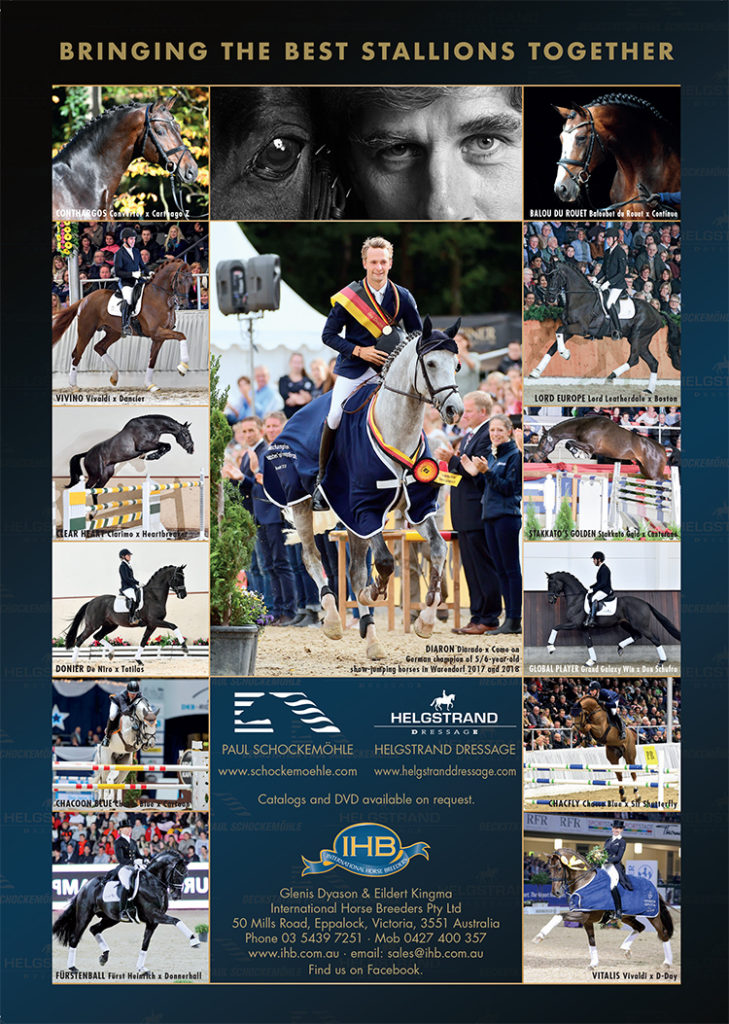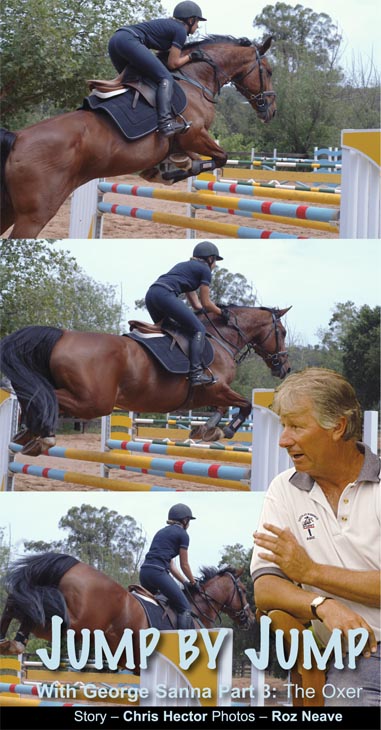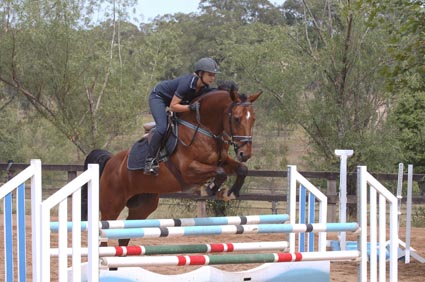Missed part one? It’s here. Part two is here
We continue our jump-by-jump examination of what it takes to get around a showjumping course with master coach, George Sanna. Last month we looked at verticals – this month – oxers.
“When we were discussing verticals I mentioned that in many ways the oxer is an easier jump – the horse balances itself and maybe there is a little less pressure on the rider from a distance point of view. But having said that, it is also fair to say that the oxer incorporates the difficulties of the vertical with the added difficulty of the spread.”
“I think the important thing with the oxer is the canter. The difference in the canter between the vertical and the oxer, is that the oxer canter normally has more pace, a little more forward – and there is a difference between speed and forwardness.”
“Speed and forwardness are concepts that confuse a lot of people. Speed affects the time it takes to get from A to B. It has a significant effect on the length of the horse’s stride, so if you go fast the chances are his stride will be longer. It is possible for a horse to take quick short steps if he is busy, but normally if you increase the pace, then you increase the stride. Forwardness is something that has nothing to do with the length of the stride, or the speed of the horse. It is a mood, it is a balance, it is a mindset. It is an essential ingredient to creating good distances to jumps. Forwardness is really probably the single more important part of creating a good distance. Basically when we talk about forwardness we talk about an activity and a willingness to go forward. That is essential for every jump.”
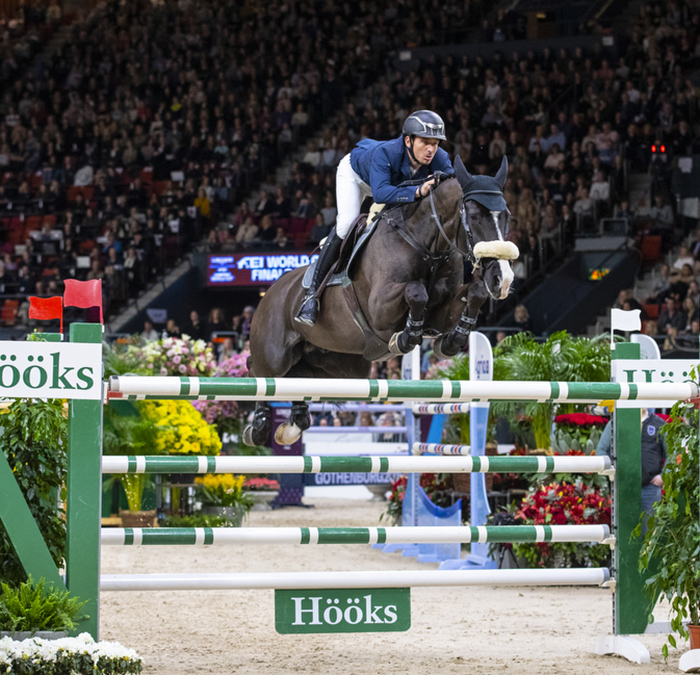
“With the oxer we will probably have more pace. We need the horse to take a longer jump – so as we said at the beginning, the horse’s jump is reflected in his canter. We need more pace, we can probably ride to a distance that is a little deeper than we rode to the vertical. Assuming we start with a vertical and an oxer that look identical in front and the oxer simply has a back element to it – we can ride deeper to that oxer. You’ll notice that, if you have a vertical vertical combination, set at let’s say 24 feet, which is just a normal standard one-stride distance, that will actually ride quite short. If you make it vertical / oxer, it will ride moderately normal, and if you have oxer to oxer, you actually might ride a little positive, simply because the horse gets in deeper and lands shorter.”
Story continues below the advertisement

“With the vertical, the top of the horse’s trajectory is where the rail is, whereas with the oxer, the top of the horse’s trajectory is between the front and the back rails. He is going to jump a slightly different shaped jump, but he is going to jump it from a little closer, he is going to jump the front rail on the way up, and he is going to jump the back rail on the way down – so he is going to land a little steep as well. He is actually going to land closer to the back rail and take off closer to the front rail than he would if it was a vertical.”
“When you are walking distances you have to be aware of that.”
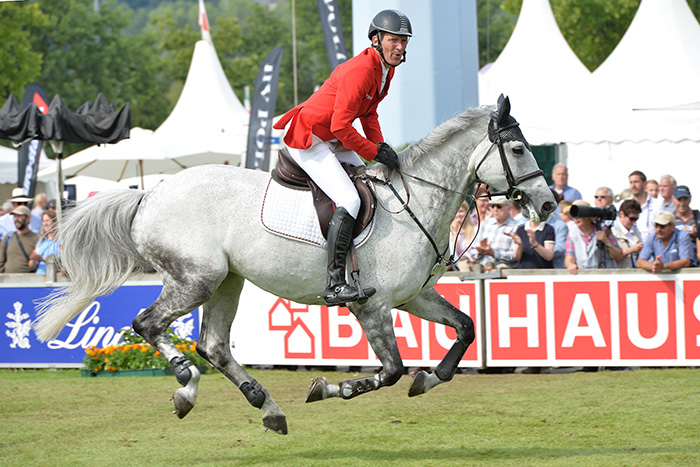
“To ride the oxer we must have a canter that is more positive and more forward through the turn. Very rarely can we turn as short to an oxer in the jump-off as we can with the vertical – because we have to have that forwardness and that ground speed. We’ve got to take a line through the curve that enables us to maintain our pace – whereas to a vertical, we can turn very short, and provided we end up with the distance and a bit of activity, it doesn’t matter how slow we are, the horse can pop up in the air and land comfortably. With the oxer, the same ride will get us landing on the back rail. Maintaining our pace and our forwardness is a critical aspect of jumping oxers.”
Story continues below the advertisement

Problem areas?
“We have problem areas in that if we get too deep, the horse jumps up in the air, and lands on the back rail – or he picks the front rail up on the way through. Similarly if we stand off, then obviously the back rail is at risk as well. We can probably get away with a slightly more unbalanced approach – not that we want to be doing that – to an oxer because the horse will balance himself more because of the substance of the jump, however once the fence gets sizeable, there is not a lot of tolerance for a poor distance.”
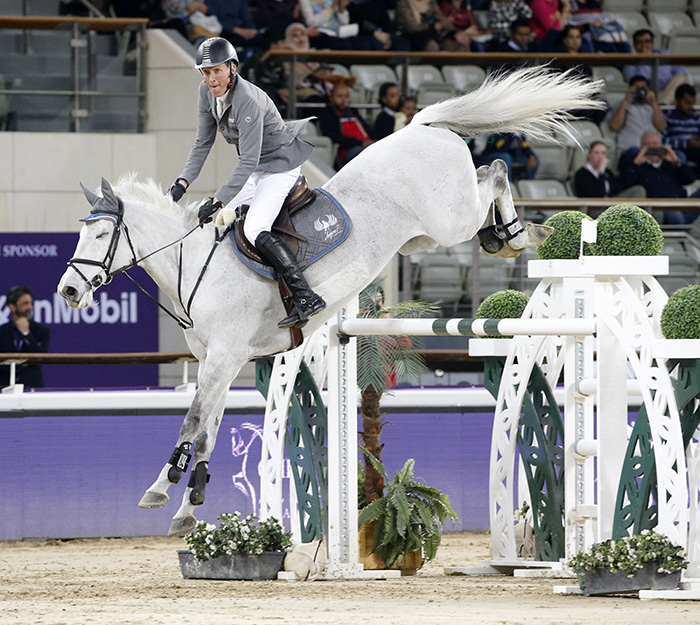
Schooling principles?
“It depends. Some horses naturally have a lot of power off the ground and they get to the back rail very easily. Other horses are weaker off the ground – weakness off the ground will give you oxer issues. The horse needs to get off the ground with a fair amount of power to jump comfortably to the back rail. So creating energy off the ground can often be helped with a stick on the take off stride, give him a little tap behind your leg. Creating energy and strength off the ground is often very good for the horse that is weak at the oxers.”
“When horses lose confidence with amateurs, it will more likely happen at the oxers than the verticals. They can sort of dribble into the bottom of a vertical and climb up over it and land; if they do that at the oxers they land on the back rail on their stifles and one or two of those and they pack it in very quickly. Strength and being positive is a critical part of jumping oxers.”
“If we are talking gymnastics, then when we start horses off, we always do simple grids. A trot and a pop and a bounce, a one stride and an oxer out – I think that’s fine, but I don’t think there is anything unique to an oxer as opposed to another jump. All the principles – finding a good distance, an active canter, forwardness, strength off the ground, straightness – that’s universal to all jumps. If there is one thing about oxers, that is essential, that is strength off the ground.”
